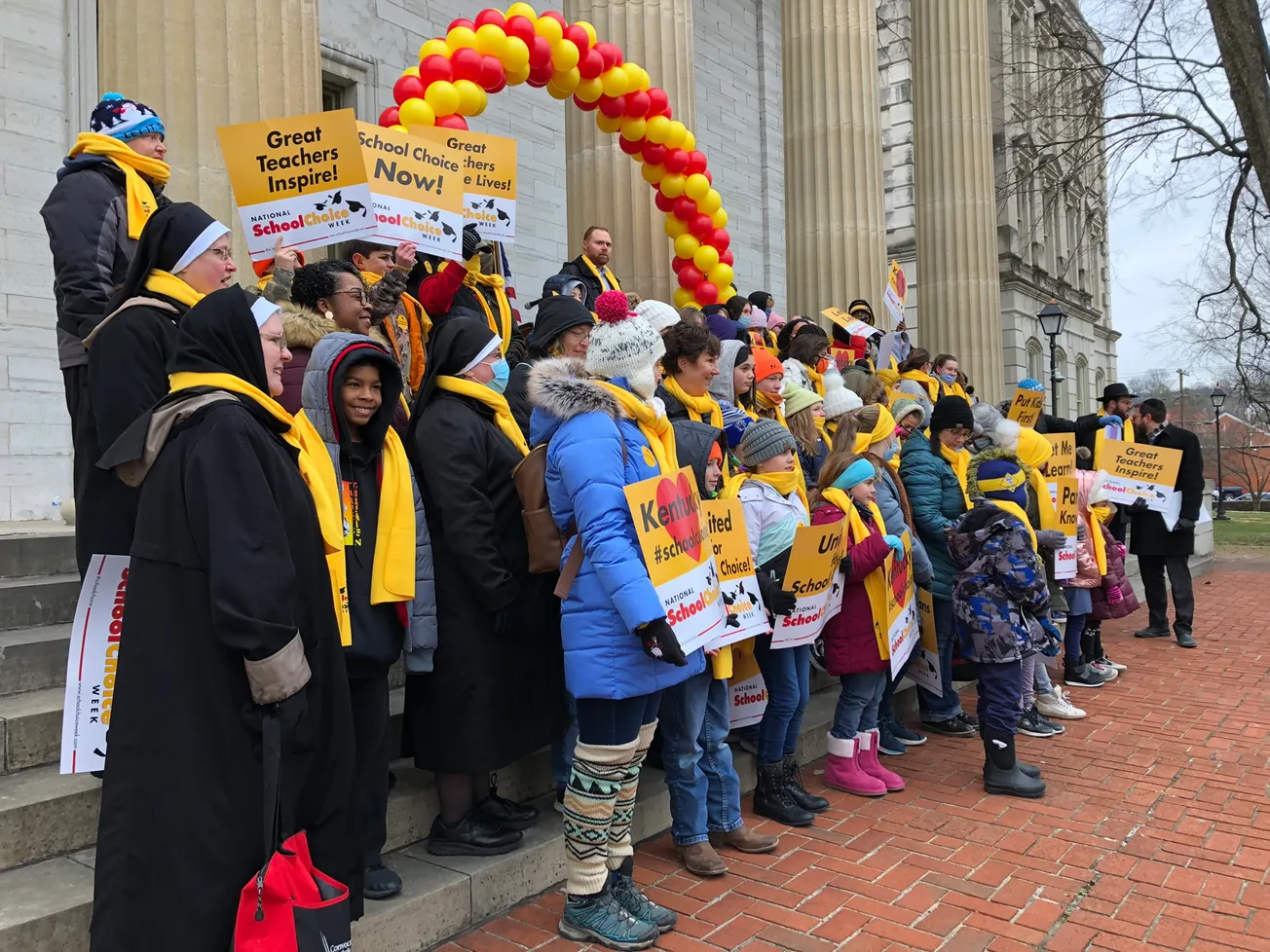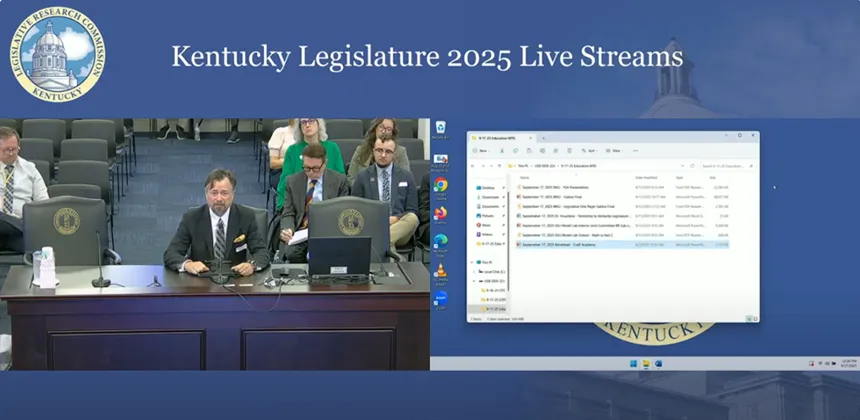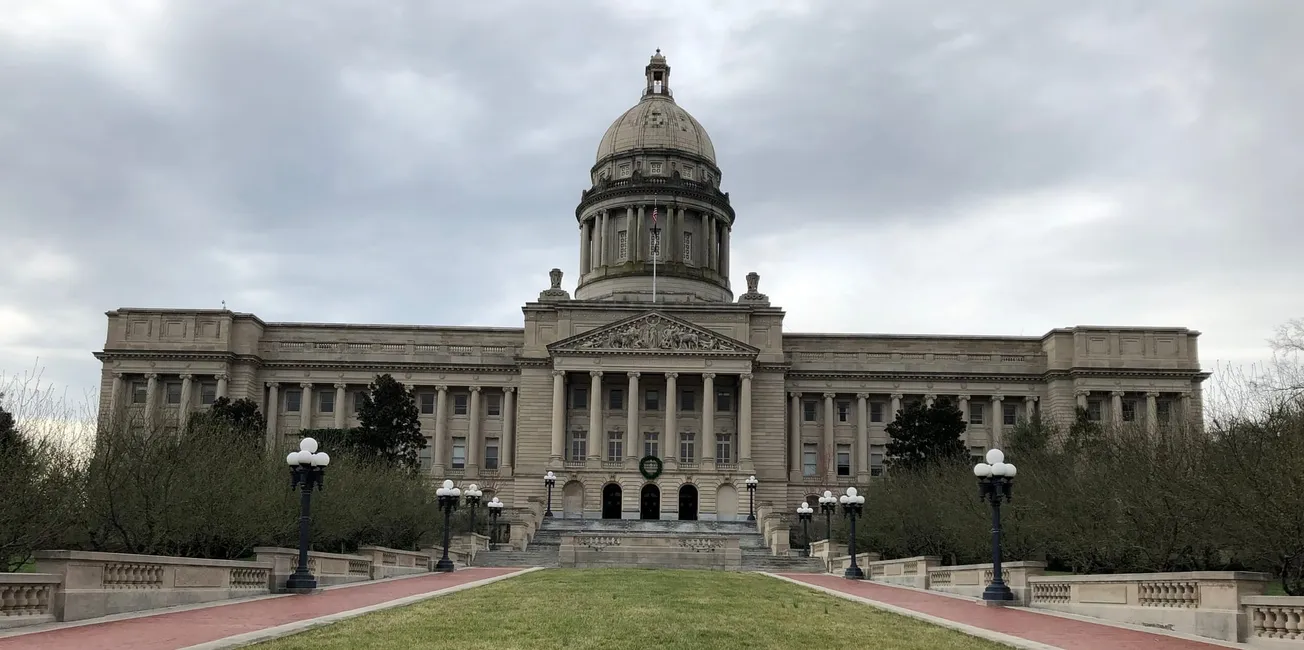Table of Contents
Remarks delivered to the Kentucky Housing Task Force on June 30, 2025.
Introduction: 'I'm coming to you from the future'
Thank you, Mr. Chair, and thank you to members of the task force for the privilege to speak this afternoon. I'm joining you from out here in California. Why is a California housing policy wonk speaking to a Kentucky task force? Other than the fact that I was born and raised in Kentucky, an eighth-generation Kentuckian, I love Kentucky and want to see it succeed.
I'm coming to you from the future in California, a state that has let housing affordability problems fester for decades. And I don't want that to happen to Kentucky. The unfortunate news is that if you want to turn into California, the solution is to do nothing.
Kentucky's housing crisis risk
As your excellent staff reported in their presentation previously, Kentucky is on track to have a California-style housing crisis if we don't take action today. As in the rest of the country, home prices went up by something on the order of 50% to 60% over the past five or so years in Kentucky. And these prices are going to continue to go up given the state's economic competitiveness and increasing population.
Median home prices as a multiple of median household incomes continue to rise in cities like Lexington, where I'm from, and Bowling Green. The median home price is now at or above five times the median household income, meaning that the typical family increasingly has no path to home ownership.
Instead, they're stuck renting, and a large and growing share of Kentucky renters are spending a third or even—in some cases—half of their income on rent. And then in the most extreme cases, of course, when you've got renters who are spending such a huge share of their income on rent, any sort of economic instability — the loss of a job, unexpected medical payments — can throw those households into homelessness.
And again, we see the state continuing to set unfortunate records on homelessness. Again, what does this look like? We put the average Kentucky family increasingly in a situation where they have no path to home ownership. They're spending most of their income on rent, and anything going wrong can send them into a situation where they're living out of an extended-stay hotel, living out of a car, or, in the worst cases, living in a shelter or on the street.
Economic implications
This is all especially important given how economically competitive Kentucky is; lots of jobs are moving to the state, and that's an exciting thing. But if we don't build the homes needed to accommodate that high and rising workforce, folks are going to feel the pain, especially the folks who already live in Kentucky as higher-income families move in and bid up the price of housing.
From the outside looking in, Kentucky is on the California trajectory, and we want to avoid that. The good news is we have plenty of time to avoid a California-style housing crisis.
Supply-and-demand mismatch
We know the root of the problem is a mismatch between supply and demand. When we survey the academic literature, when we do empirical analysis of this, we know that cities, counties, and states that are building a lot of housing relative to their peers are seeing housing prices relatively muted in their increases.
And what that does is that allows the public dollars that are spent on deed-restricted affordable housing or special forms of housing for particularly vulnerable populations — those dollars go a lot further. But if we're in a situation where teachers, police officers, nurses, and supermarket clerks can't remain stably housed without needing subsidy, we're never going to have enough dollars to solve the problem.
Now when we talk about housing affordability, I talk to a lot of folks, and they say, "Well, the problem is high interest rates, the problem is federal budget changes, the problem is tariffs." Those things are all huge, huge problems. But of course, you all as state legislators have no control over what happens with those policies.
State-level solutions
But one of the things we can control is making sure that it's easy and relatively predictable to get a permit for the types of housing that states like Kentucky need to remain affordable. In Kentucky, as in so many other parts of the country, a thicket of restrictive rules, slow and unpredictable permitting, and high construction costs that are a function of state and local policies have put us in a situation where even if some of those other federal and international issues get resolved, we're not going to be able to achieve housing affordability.
I would flag some of the most impactful things that you can do don't necessarily involve spending a lot of taxpayer dollars — I know that's a sensitive issue — and they can often have bipartisan buy-in. Indeed, I think one of the most important things we can do to improve housing affordability is to restore property rights and allow folks to use the land that they own to add the housing that our state needs.
Unfortunately, Kentucky has increasingly fallen behind on a lot of these regulatory reforms. I'm going to talk about three general buckets. And I think this complements what your staff iterated in their previous comments.
Zoning reform
The first is that in many cities and counties, local zoning often simply doesn't allow the types of housing that a state like Kentucky needs to get built. You know, when I say starter home, I think a lot of folks imagine a single-family home, two-car garage on a 10,000-square-foot, maybe even a half-acre lot. But for many households in 2025, a starter home might look like a townhouse. It might look like a condo in a small apartment building. It might look like a duplex where they can rent the other unit out and use that rent revenue to pay down their mortgage. Unfortunately, in many cases, the zoning rules simply don't allow that.
But I'm going to be stressing solutions here. In recent years, the state of Florida has legalized housing in commercial zones. So in many parts of the country, housing cannot legally be built in any commercial zone. So you have a half-empty strip mall or you have a half-empty office park — something that might realistically never be leased out in an age of remote work.
What Florida said was if an applicant can build workforce housing on that site, they should be allowed to do that consistent with a reasonable density and height that reflects the local conditions. And if they can make that specifically workforce housing, they should be entitled to a property tax abatement to make sure that that pencils.
We've not had a full report out on that yet because that's been in recent years. But it seems like the Live Local Act has helped to facilitate something on the order of 10,000 units in the pipeline at a period when construction is falling for a variety of reasons.
There aren't a lot of happy stories here out of California, but one of the successful things that we've done has been legalizing accessory dwelling units. These are sometimes called mother-in-law units or granny flats. These are additional units that a homeowner can add to their property, in many cases called mother-in-law units for aging parents or to keep young adult children close by while they save up for a downpayment.
That's partly why these ADUs have been so popular among groups like AARP, providing homeowners with options and flexibility to add additional units. Prior to 2017, ADUs were illegal to build almost everywhere in California. And we've passed legislation to empower homeowners and small property owners to add ADUs.
And that's facilitated something on the order of 100,000 ADUs being built. That's 100,000 new homes that were built at no cost to the taxpayer that previously had been illegal. And in many cases, homeowners are adding these ADUs, getting an additional source of income, and they're achieving housing stability.
Streamlining permitting
In addition to zoning allowing for housing to be built, I always say, "It's all well and good if the zoning allows the housing to be built, but if it takes months or years to get a permit, if it's a long and unpredictable process, it might as well not be legal."
Something that a few states have done in recent years — Tennessee, Florida, Texas, three states that I'll be highlighting pretty regularly here — have allowed for, in cases where the city or the county is delayed in issuing the permit or conducting the inspection, the applicant can hire a licensed third-party professional to do that work to move the process along.
That's absolutely key, especially for smaller projects. If there's a lot of unpredictability in permitting, if it could be two weeks or two months and you don't know or two years to get all of your entitlements and permits, that can really imperil projects and especially smaller projects built by small local developers who might not have an attorney or a planner full-time on staff.
So, making it really, really easy to get through the process is absolutely key.
Cost containment
Then the third bucket I think that's really, really important is cost containment. Ensuring that the government isn't needlessly imposing a bunch of rules and regulations that force housing prices to be higher than they need to be.
You know, there are rules related to health and safety that might increase costs, but that's just necessary. But to the extent that we're increasing housing costs without any basis in health and safety, those are areas where we can improve.
Returning to Texas, just earlier this year, they passed SB 15, which was a priority of their lieutenant governor, to allow for smaller-lot single-family homes, allowing homeowners to get in on the ladder of home ownership by purchasing a home on a slightly smaller lot. That's absolutely key given how land prices continue to rise in high-demand contexts.
Alternatively, in Arkansas, they passed legislation preempting high local building-material mandates that forced developers to use building materials that were much more expensive than what would have potentially been allowed under the state building code. That was Act 446.
Or North Carolina, eliminating parking mandates that forced, in many cases, projects to come with huge parking lots that were virtually never full, or large parking garages that could increase the cost of a new unit by $30,000, $40,000, or $50,000 per unit, providing consumers with the flexibility to purchase exactly the type of housing that meets their needs and providing developers the flexibility to provide it.
Conclusion: Kentucky's need, Kentucky’s opportunity
I would stress this: a lot of these reforms are necessary but not sufficient. Of course, we have to be planning for growth. We have to be lining up the public support for the infrastructure needed for additional housing, exploring the building code and other aspects of land-use regulation and housing regulation to make sure that we're allowing for the most affordable and safe forms of housing to be built.
And Kentucky could easily be a leader on this issue without necessarily huge increases in public outlays or without necessarily big, complicated programs. You know, a lot of these reforms that I've highlighted and that we'll provide materials on in follow-up correspondence are letting the market provide the housing that our communities need.
Again, I'm coming to you from the future. Decades of strict rules and costly mandates get you to a place like where California is today, where hundreds of thousands of people are leaving the state, where folks who have remained have no path to home ownership. They're doubling or tripling up in apartments. Folks are living in tents and cars.
I desperately, desperately don't want that for my home state, and I would urge you to continue working on this issue, and I appreciate the leadership of the task force on this. Thank you.
Remarks delivered to the Kentucky Housing Task Force on June 30, 2025








